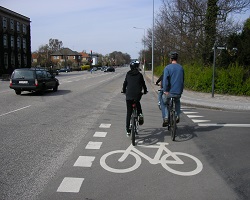Air quality
The air we breathe contains emissions from motor vehicles, industry, heating and commercial sources, as well as tobacco smoke and household fuels. Air pollution harms human health, particularly in those already vulnerable because of their age or existing health problems.
Read moreTop story
 Promoting cycling can save lives and advance health across Europe through improved air quality and increased physical activity
Promoting cycling can save lives and advance health across Europe through improved air quality and increased physical activity
On World Bicycle Day, celebrated on 3 June, WHO highlights a new master plan that calls countries to acknowledge cycling as an equal mode of transport and to double the level of cycling by 2030.
Tools for health impact assessment of air quality: the AirQ+ software
Estimating how many diseases or deaths are caused by air pollution in a given population is the starting point to develop or adjust policies and measures that protect people's health. AirQ+ calculates the magnitude of several health effects associated to exposure to the most significant air pollutants.
Download softwareWHO air quality guidelines
The WHO air quality guidelines for outdoor air pollution represent the most widely accepted and up-to-date assessment of health effects of air pollution, recommending targets for air quality at which health risks are significantly reduced.
Air quality guidelines. Global update 2005. Particulate matter, ozone, nitrogen dioxide and sulfur dioxideIn countries
 Health effects of particulate matter. Policy implications for countries in eastern Europe, Caucasus and central Asia
Health effects of particulate matter. Policy implications for countries in eastern Europe, Caucasus and central Asia
Air pollution
- Health effects of black carbon
- Health risks of ozone from long-range transboundary air pollution
- Health risks of heavy metals from long-range transboundary air pollution
- Health aspects of long-range transboundary air pollution
Data and statistics
One year of life expectancy is lost for every person in the WHO European Region due to exposure to particulate matter (PM). This is mostly due to the increased risk of cardiovascular and respiratory diseases, and lung cancer.
More informationKey policy resources
Parma DeclarationFifth Ministerial Conference on Environment and Health, Parma, Italy, 2010
More policy resources




